#17thcentury
Photo

The Regency of Anne of Austria, Queen Regent of France, Mother of Louis XIV
Martha Walker Freer’s “The Regency of Anne of Austria, Queen Regent of France, Mother of Louis XIV” is a classic text that delves into the life of Anne of Austria during her reign and regency by using numerous previously unpublished sources. Aimed at scholars and enthusiasts of 17th-century French history, this book provides an exceptional understanding of Anne of Austria’s contributions to French history.
The Regency of Anne of Austria, Queen Regent of France, Mother of Louis XIV by Martha Walker Freer (1822-1888) is a beautifully written classic work that not only characterizes Anne of Austria but also places her in the broader context of French History. Consisting of two volumes, this classic text aims to illuminate the intricacies of Anne’s regency which is typically overshadowed by the reign of her son, King Louis XIV, also known as the Sun King. Freer creates a diligent spread of the numerous sources that give life to Anne’s rule.
The chapters cover various aspects of Anne’s regency, such as her relationship with others in court, her policies and the policies of others, and the many adversities that she faced in this period of her life. This work provides a detailed analysis of Anne’s contribution as a French queen. Freer’s use of previously unpublished sources helps this text stand out from others in the same time and genre as the unique reference sources provide readers with a fresh and nuanced look at Anne of Austria’s life. This, in return, allows this book to address multiple events and introduce many individuals while presenting new insights and analyses of Anne’s life during her regency.
With her regency constantly shadowed by different French rulers, Anne of Austria’s regency is seldom referenced or discussed. French history can become complicated, especially when concerning the monarchs and their enemies and allies, as all must coexist within the French court. With the numerous sources describing Anne’s reign as regent, readers are allowed to learn more about the intricacies of French court life and the many decisions and factors that went into ruling this country. From adopting the policies of her former enemies in court to building her own supporting council of advisors and allies, and even contesting the will of her late spouse, this book constructs a three-dimensional view beyond a simple biography to complicate Anne of Austria.
Freer’s writing style keeps readers engaged and wanting more as the narrative tone helps readers follow along with the story. The use of exclamatory dialogue allows the mentioned figures to seem more human and provides a place to gather quotes from several historical French figures. The book also includes the lyrics of popular contemporary French songs. This emphasizes Freer's argument by allowing readers to become more immersed in life in 17th-century France. Freer does a wonderful job of introducing new historical figures and policies by utilizing footnotes. The book's footnotes provide complementary information, such as brief explanations of the relationships between historical figures, directions for further readings, and a brief history of architectural structures. These informative additions completely transform the reading experience as the reader is supplied with further context to ensure that they understand the nuances of the time, and make connections between the various events.
While this is a great read for those with an academic background or research purposes, this book may be too detailed and specialized for everyday readers. Given the tumultuous nature of French history, previous knowledge of 17th-century French history and politics is recommended to follow along. Having written multiple books on French history in similar fashions, Freer's work is one that underwent much research to encompass the complexities of the time. It would be a wonderful primary source used in scholarly writing.
Born in Leicestershire, United Kingdom in 1822, Martha Walker Freer was an English woman who wrote of the various topics that created French history, especially the women who contributed significantly to French nation-building. Even after she wed Rev. John Robinson, Freer continued to write her many works under her maiden name. Overall, this is a highly recommended book for those interested in learning about an overlooked French queen from a spectrum of perspectives.
Continue reading...
17 notes
·
View notes
Text

The marke of Tasomockon (Tuspaquin)
Wampanoag. Their homelands at Nemasket and Assawompset (in the areas today called “Middleboro” and “Lakeville, Massachusetts”).Their mark appearing here on a document dated 1651, and signed also by Ousamequin, the Massasoit, and Ousamequin’s son, Wamsutta (later also called Alexander).
Tuspaquin’s kin: son of Pamontaquask. A partner, Amie (daughter of Ousamequin), their sons, Benjamin and Wiliam Tuspaquin.
This is our second post on Tuspaquin, whose mark is different across the two documents (dated 1651 and 1664) we’ve so far explored.
Seen at Massachusetts State Archives.
#tuspaquin#sachem#wampanoag#nemasket#assawompset#massachusetts#theirmarks#17thcentury#17c#massstatearchives#algonquian#easternwoodlands#nativehistory
17 notes
·
View notes
Text
Werewolf of Ansbach, c. 1685.
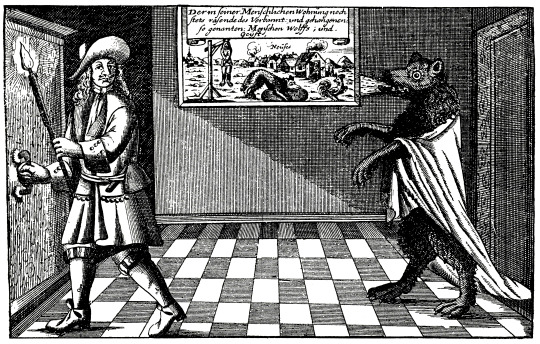
220 notes
·
View notes
Text
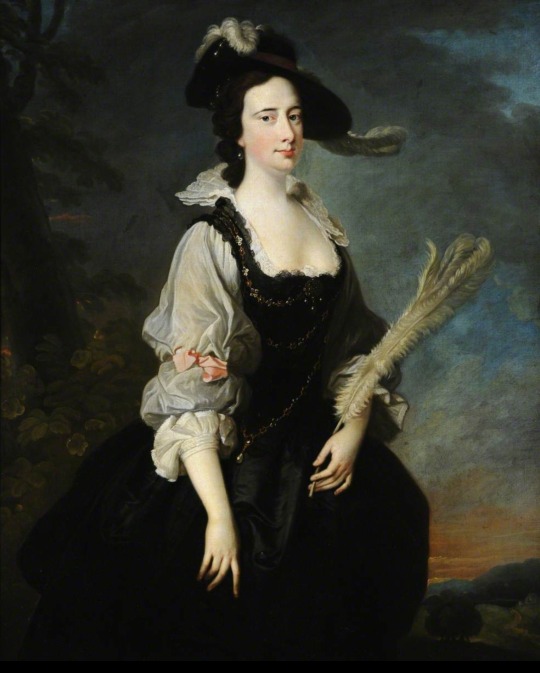



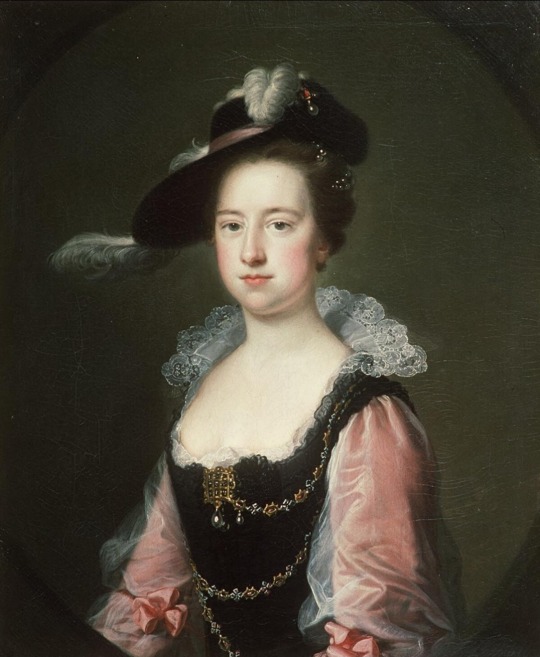
And in blue

1. Lady Lucy Manners 1742-1749 by Thomas Hudson and Joseph Van Aken
2. Jane Hale by Allan Ramsay
3. Frances Courtenay by Thomas Hudson
4. Dorothy Willing 1752 by John Wollaston
5. Bridget Williams by Thomas Hudson
6. Elizabeth Dunch by Thomas Hudson
@battleofbunkerhill You are not the only one who loves this dress
31 notes
·
View notes
Text

Jan Luyken’s Frontispiece for Osteologia (1680)
Etching https://publicdomainreview.org/collection/luyken-osteologia
39 notes
·
View notes
Photo
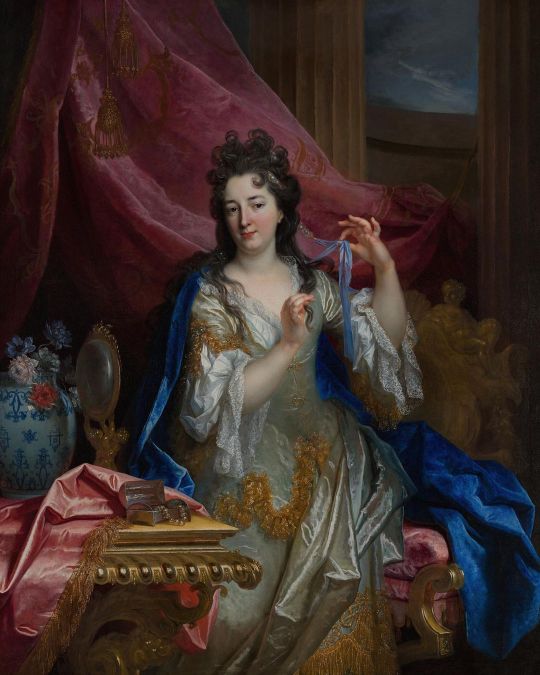
Portrait of a Woman, Nicolas de Largillière, 1696. #nicolasdelargilliere #art #oiloncanvas #painting #portrait #portraitofawoman #17thcentury #17thcenturyart #artwork #artist #artdetails #versailles #chateaudeversailles #frenchart #frenchartist #arthistory #artgallery #museum #saintlouisartmuseum #decorativearts #frenchdecorativearts #porcelain #flowers #jewels #artcurator #artcollectors #fineart #oldmasters #oldmasterpaintings #portraitpainting (at Saint Louis Art Museum) https://www.instagram.com/p/Cka_z4aIpyN/?igshid=NGJjMDIxMWI=
#nicolasdelargilliere#art#oiloncanvas#painting#portrait#portraitofawoman#17thcentury#17thcenturyart#artwork#artist#artdetails#versailles#chateaudeversailles#frenchart#frenchartist#arthistory#artgallery#museum#saintlouisartmuseum#decorativearts#frenchdecorativearts#porcelain#flowers#jewels#artcurator#artcollectors#fineart#oldmasters#oldmasterpaintings#portraitpainting
24 notes
·
View notes
Text

The given 17th-century religious masterwork was painted by an anonymous icon painter from the Kremlin Armory Workshops. But what does an armory have to do with holy relics? According to Leonid Turassuk, the earliest direct reference to the workshop dates back to 1547, when it was mentioned in Russian chronicles. In the beginning, it was responsible for producing and storing military weapons and armor. With time, however, its masters started creating ceremonial items, including different pieces of parade uniform, portraits of nobility, and icons, which were some of the cornerstones of Orthodox Christianity.
#mandylion#jesuschrist#iconography#orthodoxchristianity#17century#17thcentury#religiousart#religiousicons#russianiconcollection#historicalfacts#christianart
20 notes
·
View notes
Photo

During September, 1697, the Malagasy natives of the island of St. Mary’s, off Madagascar, led an uprising; an attempt to displace the pirates that had been using the island as a base of operations.
The pirate haven had been established by murderer, and in some accounts “pirate,” Captain Adam Baldridge around 1690. Overlooking the harbor, by 1697, the man had established a fortification armed with 22 cannons, he had subdued the native population, and native chiefs had been forced to pay him for mediation between their warring tribes.

Baldridge lived a luxurious life on the island, as pirates came and went freely. That is until word reached the natives that some of their number had been captured, and that Baldridge had been selling them into slavery. The uprising would occur, seeing the natives swarming the pirate town, which resulted in Baldridge opting to leave the island heading for the American colonies, while a number of pirates were killed in the insurrection, including Robert Glover, John Hoar, and a number of crew who had sailed with Thomas Tew.

According to Captain William Kidd:
”Baldridge was the occasion of that Insurrection of the Natives and the death of the pirates, for that having inveigled a great number of the natives of St. Maries, men, women and children, on board a ship or ships he carryed and sold them for slaves to a French Island called Mascarine or Mascaron, which treachery of Baldridges the Natives on the Island revenged on those pirates by cutting their throats."
Baldridge himself blamed the pirates of the island however, stating that:
”The above mentioned men that were killed by the Natives, were most of them privateers that had been in the Red Seas and took severall ships there, they were chiefly the occasion of the natives Riseing, by their abuseing of the Natives and takeing their Cattel from them.”The pirate haven would be up and running again however shortly afterwards, led by Edward Welch, known for his addition of adding prostitutes as a service offered at the pirate-have, and then followed by John Pro and James Plantain over the course of the next 20 years.

Meanwhile, Baldridge would go on to New York and lived a life as a merchantman, a trader running goods to Antigua. Although it is believed this was a ruse, and that he had instead departed New York to engage in piracy northwards, off the coasts of Newfoundland.
(Pictured is an artistic depiction of Adam Baldridge from the game Uncharted 4, photos of the island of St. Marys [aka Sainte Marie], and a 1727 depiction of Malagasy natives by German adventurer Johan Albrecht de Mandelslo)
12 notes
·
View notes
Text

Un viaggio nel 17secolo, reduce ad ELIOPOLI 2023.
2 notes
·
View notes
Text
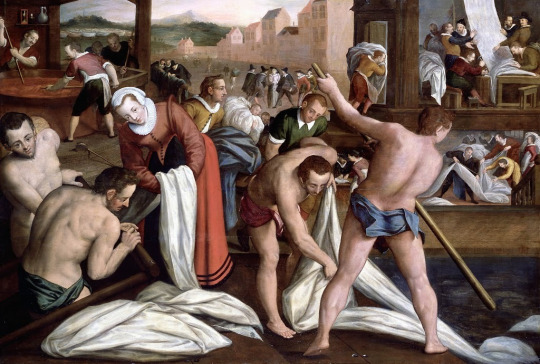



The four phases of wool work by Isaac van Swanenburg:
"Washing Furs and Sorting Wool"
"Separate the wool from the skin and carding"
"Spun, warped and woven"
"Felled and Dyed"
📸 Lakenhal Museum
Around 1630, new Spanish woolen fabrics arrived at the Leiden (Lakenhal) market and became an international success. This brought about an economic boom that led to the opening of the prestigious new sales room, the "Laecken-Halle" in 1641
3 notes
·
View notes
Text

I do so miss what I looked like before I had to bear my husband his wretched ‘heirs’… Oh, I was so lovely! I still am, just not as tempting to the Duke of York. Alas, he does not seem to be interested in me, for I am at the grand old age of nineteen.
2 notes
·
View notes
Photo
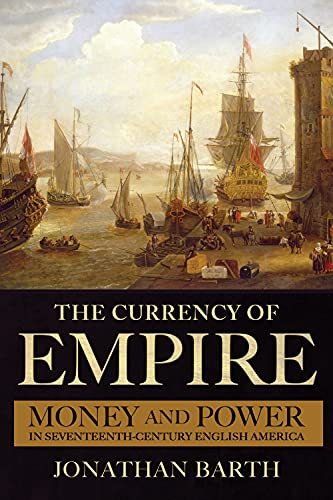
The Currency of Empire: Money and Power in Seventeenth-Century English America
Jonathan Barth argues that England expanded its empire overseas throughout the 1600s in order to collect precious metals and wealth. Barth’s thesis is that colonists tolerated economic subordination to England as long as they had political rights. His book, The Currency of Empire: Money and Power in Seventeenth-Century English America, succeeds in providing a new perspective through trade and currency that explains the economic and political tensions between the English Crown and the colonists in the Americas. Barth is Assistant Professor of History at Arizona State University and capitalizes on his extensive research in economics and politics in early modern American and British history. This book relies upon primary sources throughout, including publications from Enlightenment-era thinkers, colonial and imperial officials’ correspondence, and colonial public records. Barth also cites secondary sources from economists and historians.
Through his clarity, sources, and evidence, college students would find Barth’s work informative and convincing.
As a result of the depth and scope of his study, Barth connects with college students researching pre-revolutionary American History, imperial relations, or colonial economies. Through his clarity, sources, and evidence, college students would find Barth’s work informative and convincing. Interested general readers and advanced high school students would also find Barth’s work compelling. This book makes clear that England developed a mercantilist empire that relied upon its colonies to import raw materials - such as tobacco, sugarcane, and timber - to manufacture them and then re-export those goods to other European nations in exchange for gold and silver. To prevent the American colonists from secretly trading with French, Dutch, or Spanish merchants for better prices, both the English Crown and Parliament regulated colonial trade through the Navigation Acts of 1660. Barth dismantles the myth that the Glorious Revolution of 1688 returned economic freedom to the colonists. Rather, King William and Queen Mary strengthened trade regulations and increased taxes but won over the colonists by returning political representation to their colonial governments. In addition, this book offers insights into the economic differences between the New England, Chesapeake, and Caribbean colonies.
Continue reading...
32 notes
·
View notes
Text
youtube
Watch the American Climate Leadership Awards 2024 now: https://youtu.be/bWiW4Rp8vF0?feature=shared
The American Climate Leadership Awards 2024 broadcast recording is now available on ecoAmerica's YouTube channel for viewers to be inspired by active climate leaders. Watch to find out which finalist received the $50,000 grand prize! Hosted by Vanessa Hauc and featuring Bill McKibben and Katharine Hayhoe!
#ACLA24#ACLA24Leaders#youtube#youtube video#climate leaders#climate solutions#climate action#climate and environment#climate#climate change#climate and health#climate blog#climate justice#climate news#weather and climate#environmental news#environment#environmental awareness#environment and health#environmental#environmental issues#environmental justice#environment protection#environmental health#Youtube
7K notes
·
View notes
Text
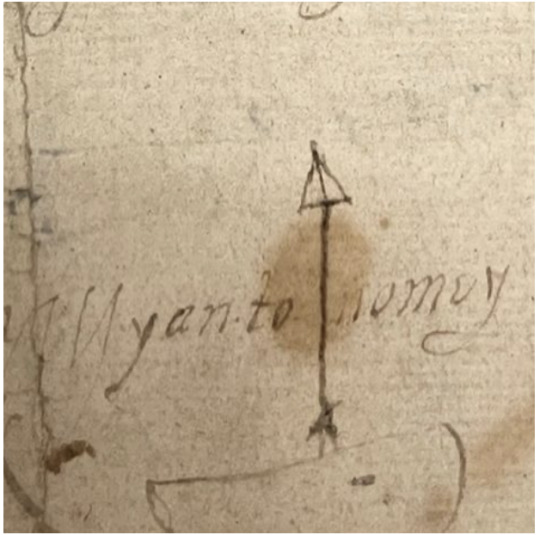
Miantonomo, Miantonomoh, Myantonomy. His Mark. (repost from 12.27.22)
Nahaganset (Narragansett). His home along the western shores of Narragansett Bay, in so-called Rhode Island, and into so-called eastern Connecticut. Sachem. In 1640s, appealed to sister tribes to create an alliance against colonizers. Brought to Mass. Bay Colony in 1640 on charges of conspiracy against settlers. Executed in Mohegan territory in 1643 following tensions with Mohegan sachem, Uncas and the English.
Place names mentioned in this deed, for so-called “Warwick, RI,” signed January 1642, include: “Sowhanes Bay,” “Copassanatuxett,” “Shawhomet” (spelled as they appear in the document).
His kin: Son of Mascus; nephew to Canonicus; brother to Pessicus; father of Canonchet. His partner: Wawaloam.
[Indian deed of Warwick, Rhode Island], 1642. Seen @ John Carter Brown Library, Providence, RI.
#nahaganset#narragansett#miantonomo#hismark#theirmarks#easternwoodlands#nativehistory#sachem#17thcentury#rhodeisland#johncarterbrownlibrary#connecticut#pessicus#cabibcget#wawaloam#mascus#algonquian#canonicus#shawomet
5 notes
·
View notes
Text
Witches trampling upon the cross, woodcut from Compendium Maleficarum by Francesco Guazzo, early 17th century.
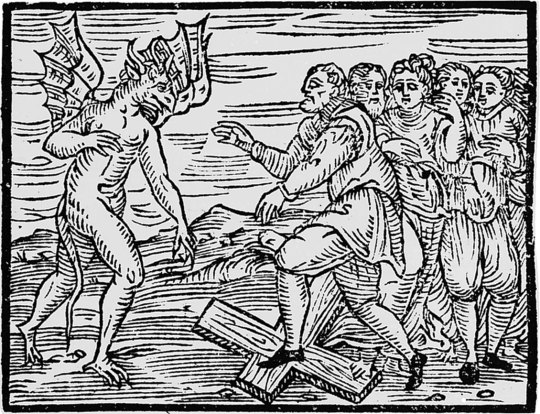
24 notes
·
View notes
Text
Rembrandt, A peasant calling out: 'tis vinnich kout', 1634.

It's very cold today in Amsterdam, or as this peasant called out in the 17th century: 'tis vinnich kout' (it's damned cold). ❄️
🖼️: Rembrandt, A peasant calling out: 'tis vinnich kout', 1634. Etching, only state, 112 x 39 mm.
#painting#arthistory#art#artstagram#artlover#artblog#beautiful#artwork#museum#historicalart#artdaily#oldmaster#baroque#17thcentury#rembrandt#rembrandthuis#winter#cold#farmer#peasant#coldweather#etching
0 notes
Text
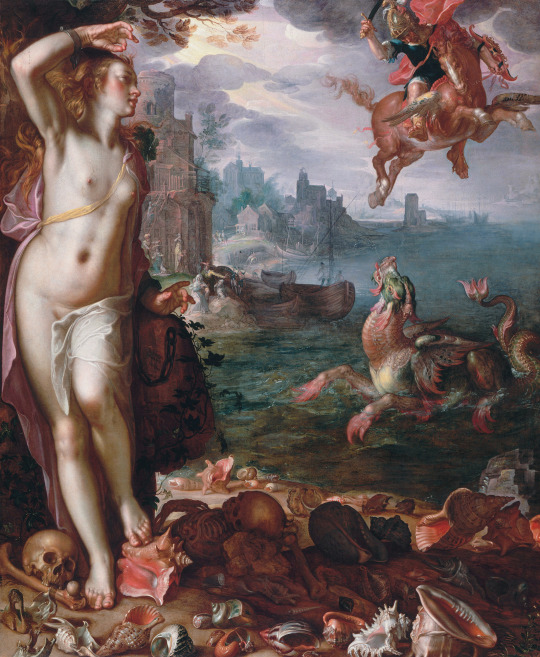
Joachim Wtewael, Perseus and Andromeda, 1611
45 notes
·
View notes